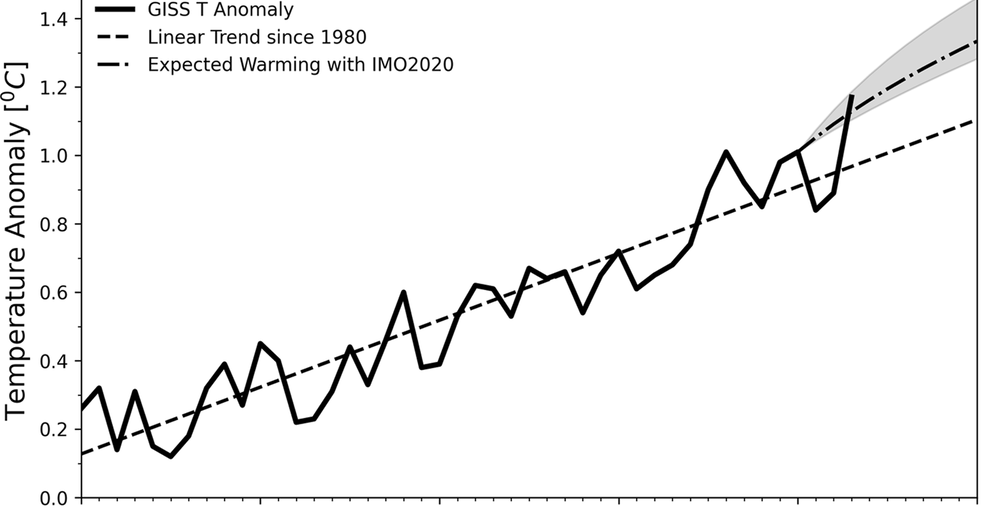In 2020 international shipping saw itself faced with new fuel regulations for cargo ships pertaining to low sulfur fuels (IMO2020). This reduced the emission of sulfur dioxide aerosols from these ships across the globe by about 80% practically overnight and resulting in perhaps the biggest unintentional geoengineering event since last century.
As detailed in a recent paper by [Tianle Yuan] et al. as published in Nature, by removing these aerosols from the Earth’s atmosphere, it also removed their cooling effect. Effectively this change seems to have both demonstrated the effect of solar engineering, as well as sped up the greenhouse effect through radiative forcing of around 0.2 Watt/meter of the global ocean.
The inadvertent effect of the pollution by these cargo ships appears to have been what is called marine cloud brightening (MCB), with the increased reflectivity of said clouds diminishing rapidly as these pollution controls came into effect. This was studied by the researchers using a combination of satellite observations and a chemical transport model, with the North Atlantic, the Caribbeans and South China Sea as the busiest shipping channels primarily affected.
Although the lesson one could draw from this is that we should put more ships on the oceans burning high-sulfur fuels, perhaps the better lesson is that MCB is a viable method to counteract global warming, assuming we can find a method to achieve it that doesn’t also increase acid rain and similar negative effects from pollution.
Featured image: Time series of global temperature anomaly since 1980. (Credit: Tianle Yuan et al., Nature Communications Earth Environment, 2024)

